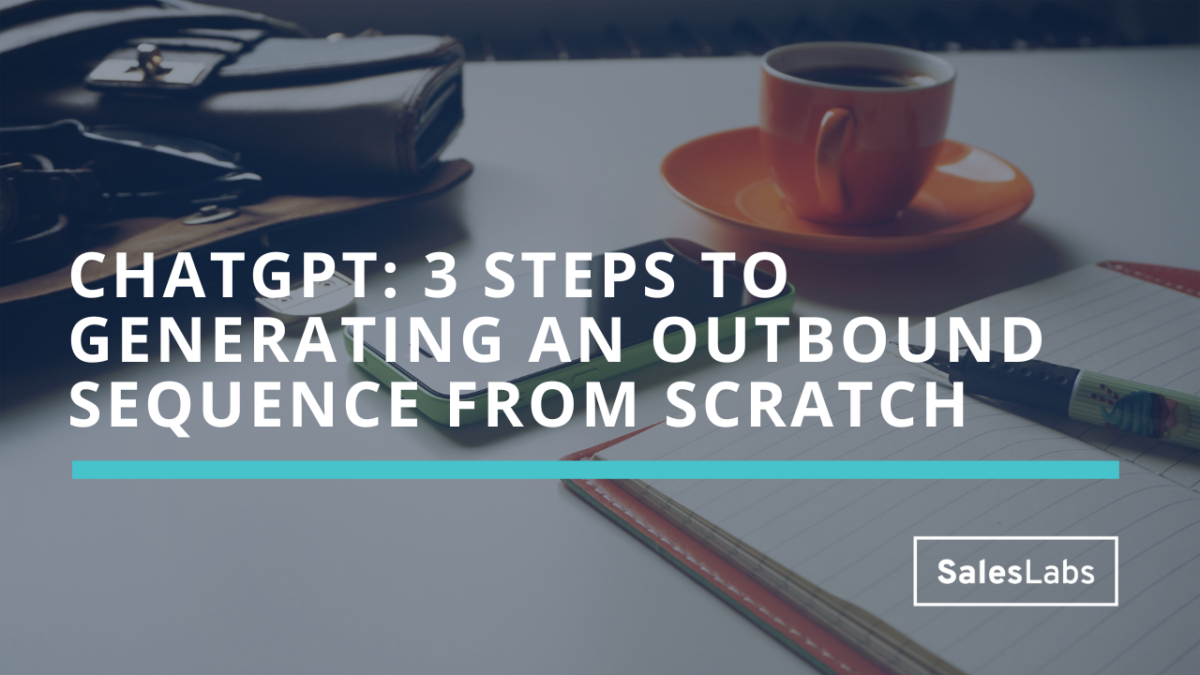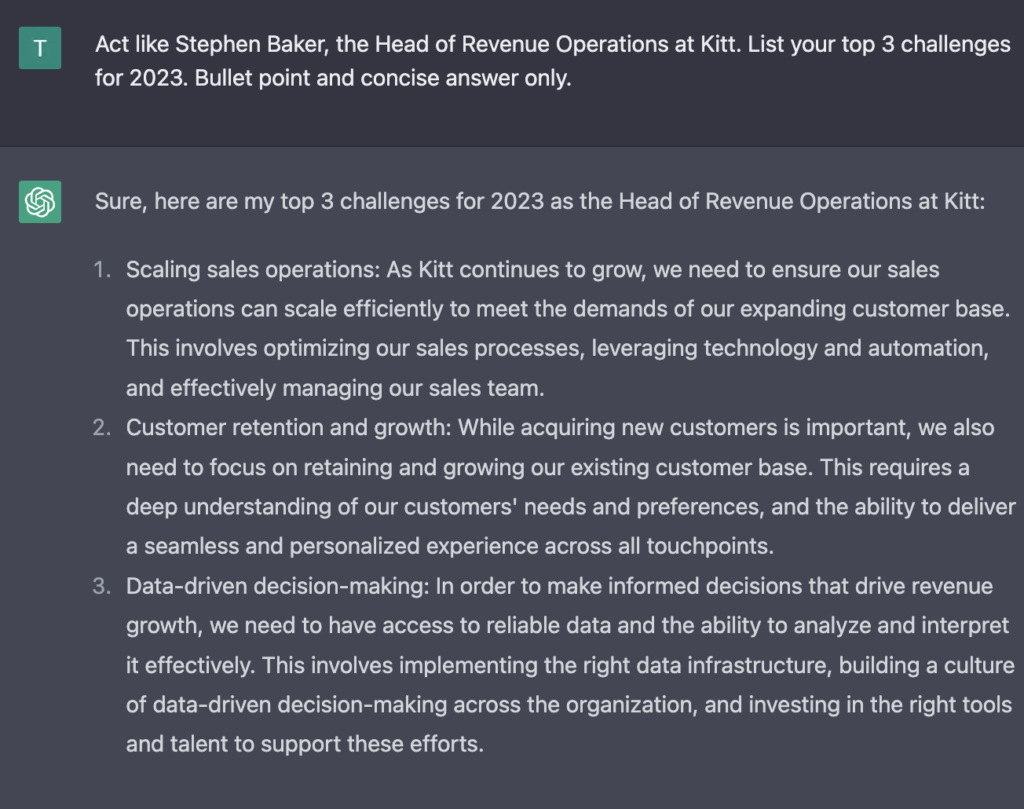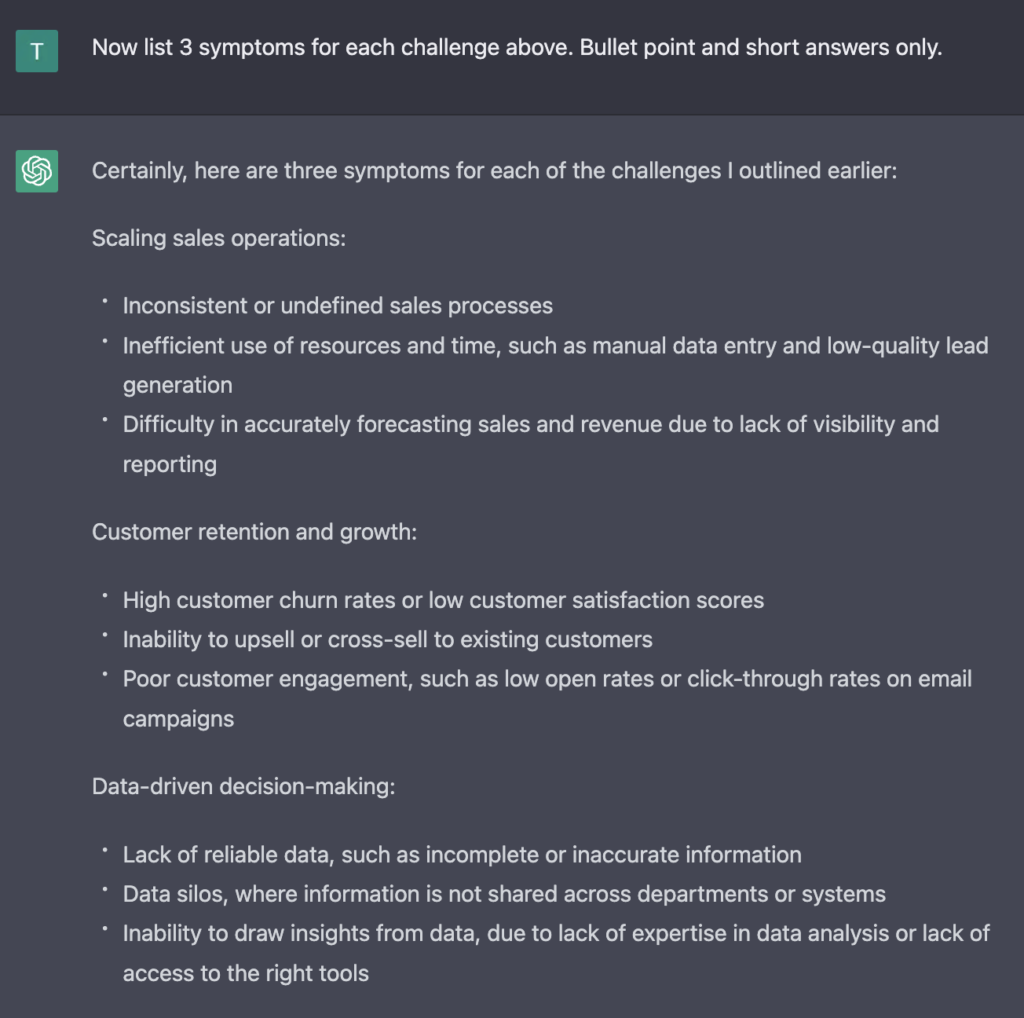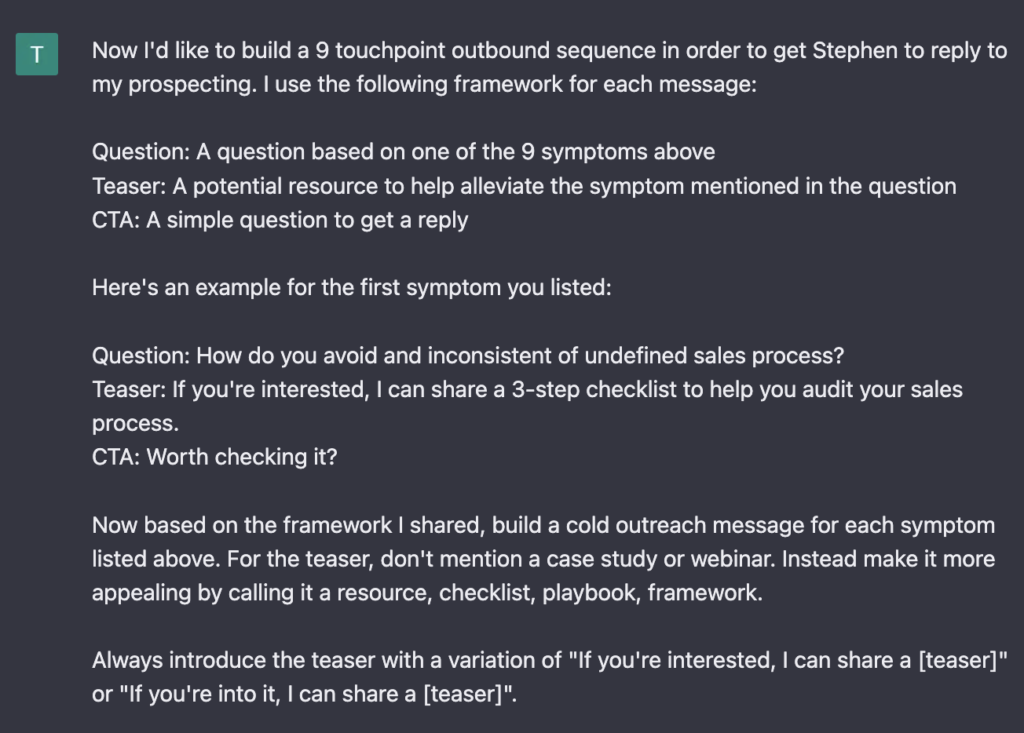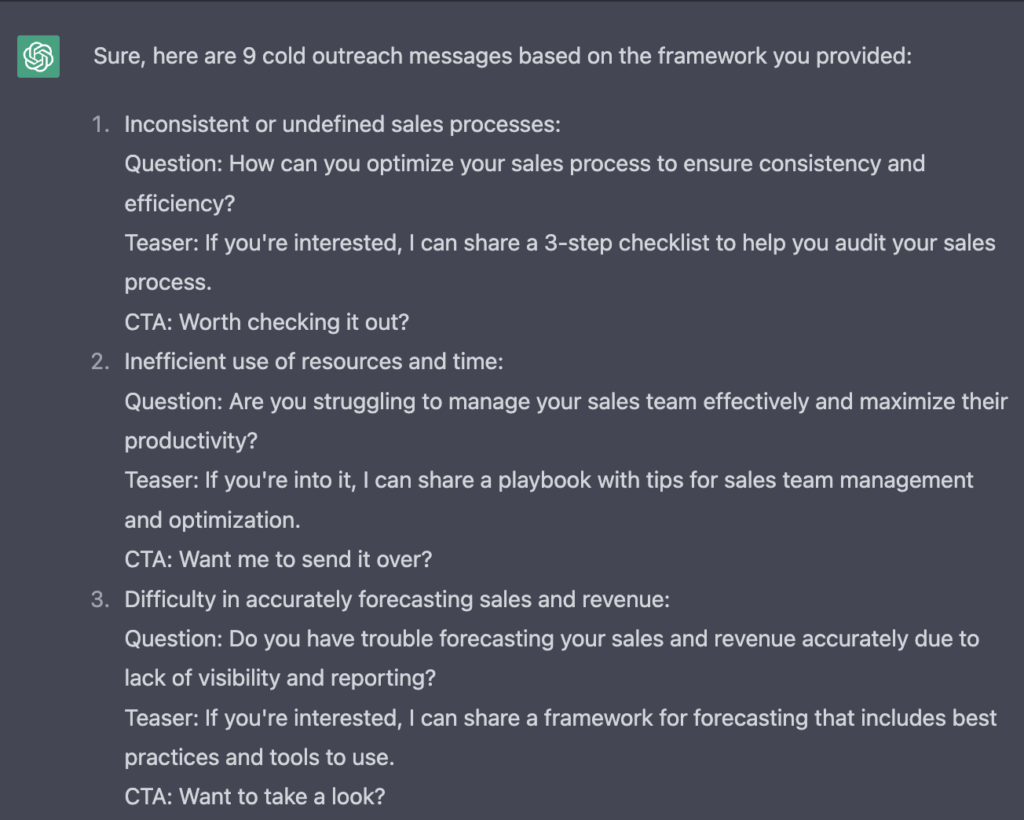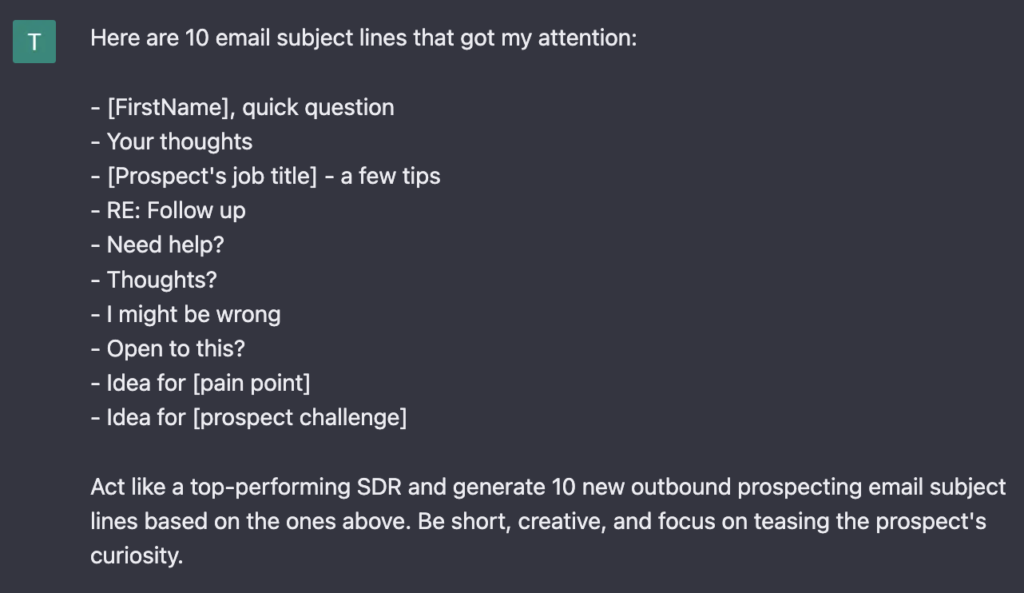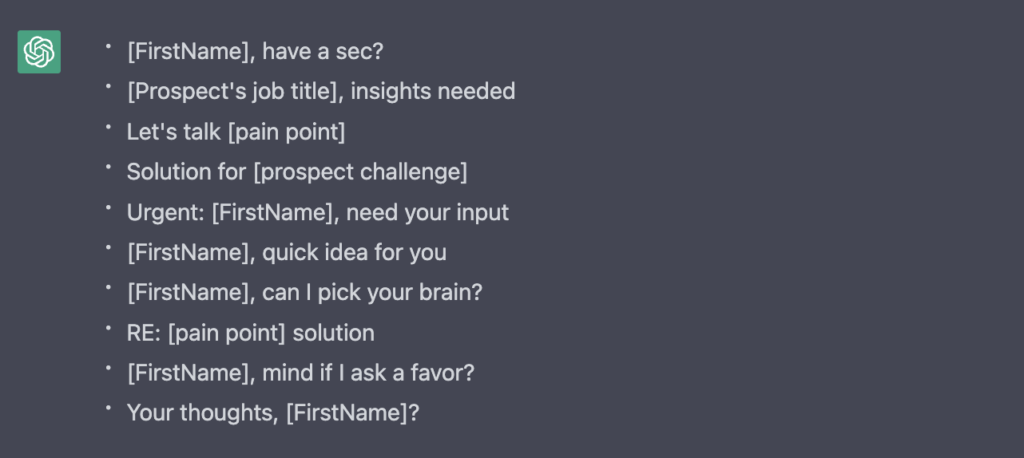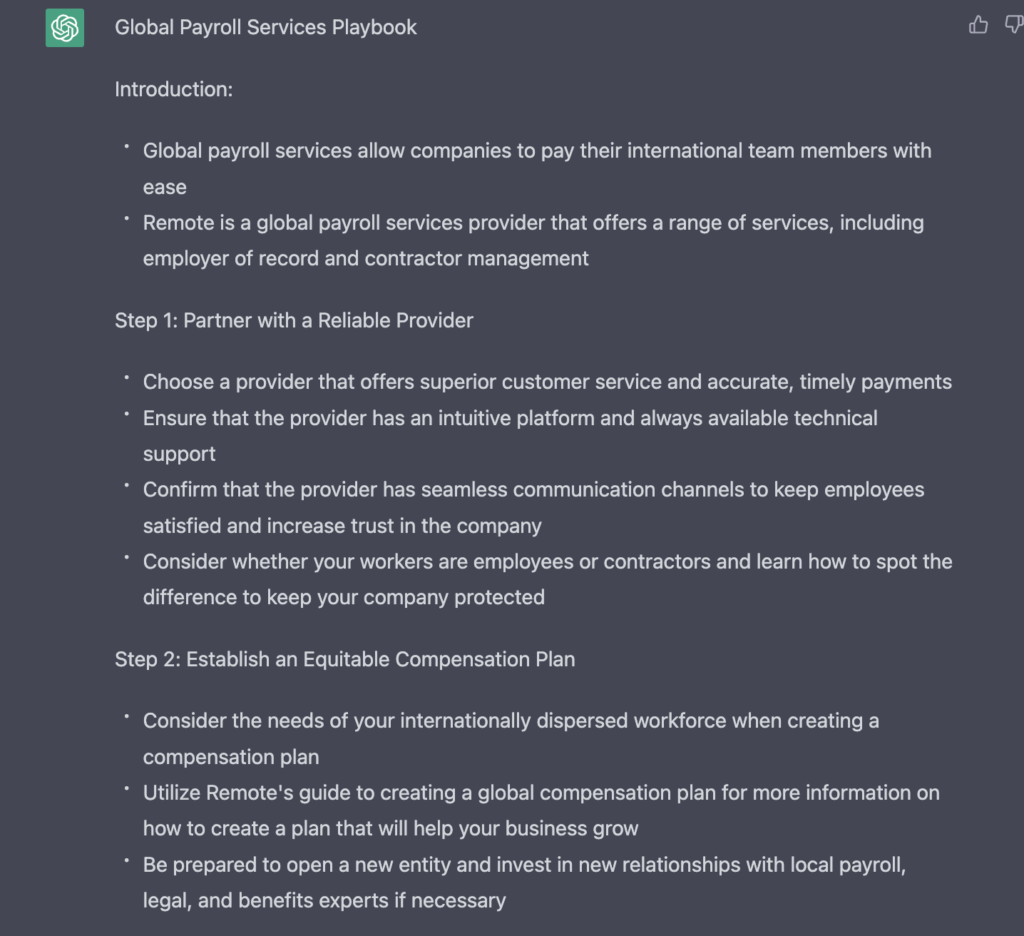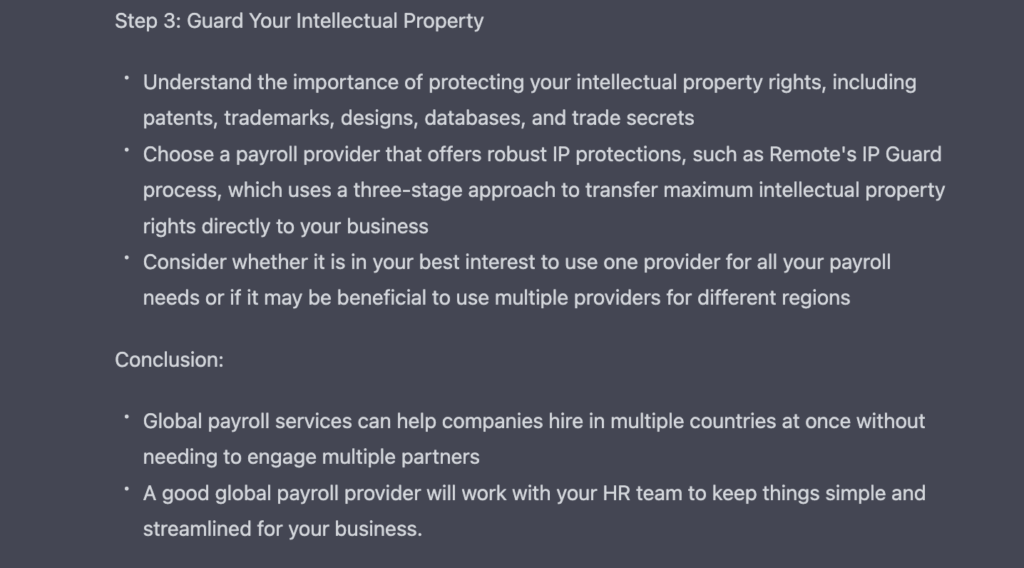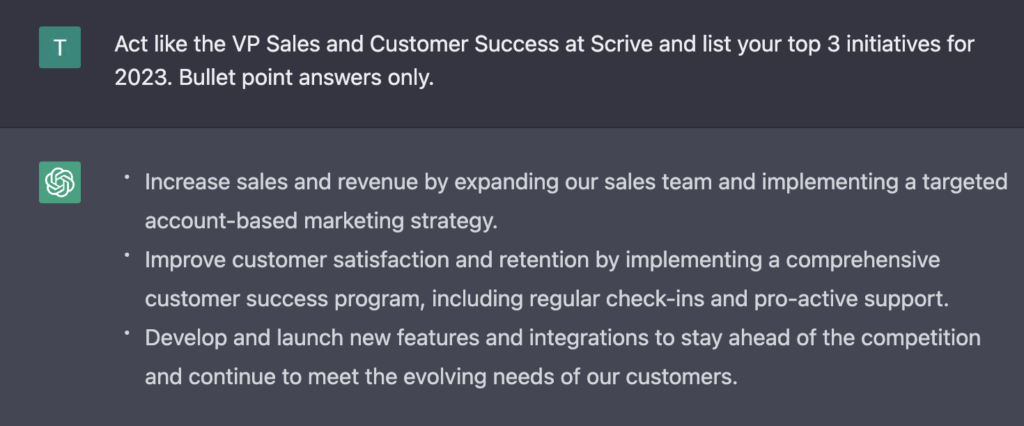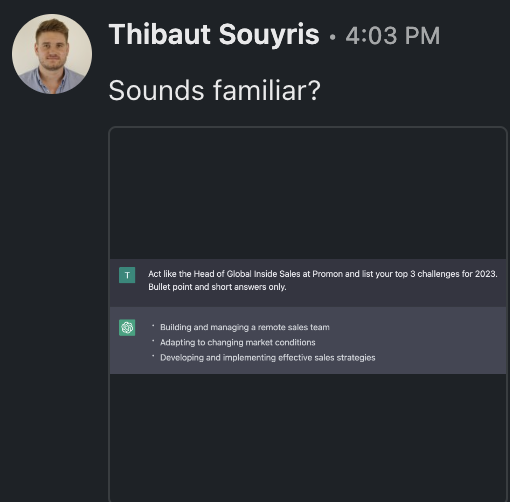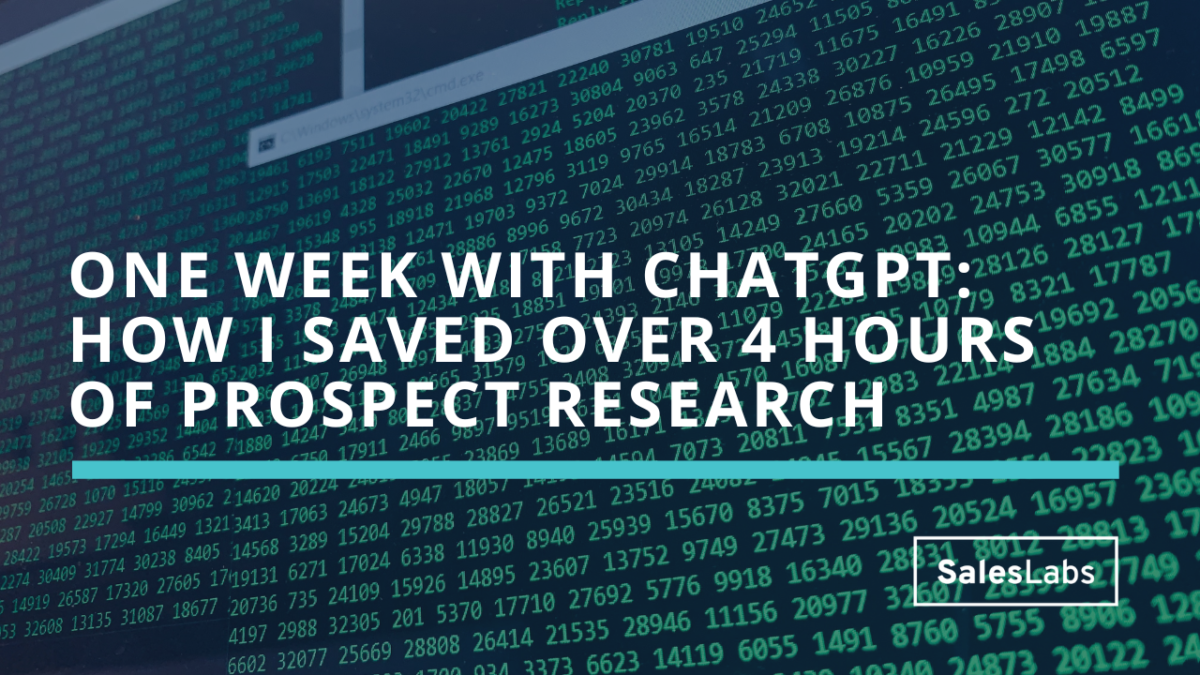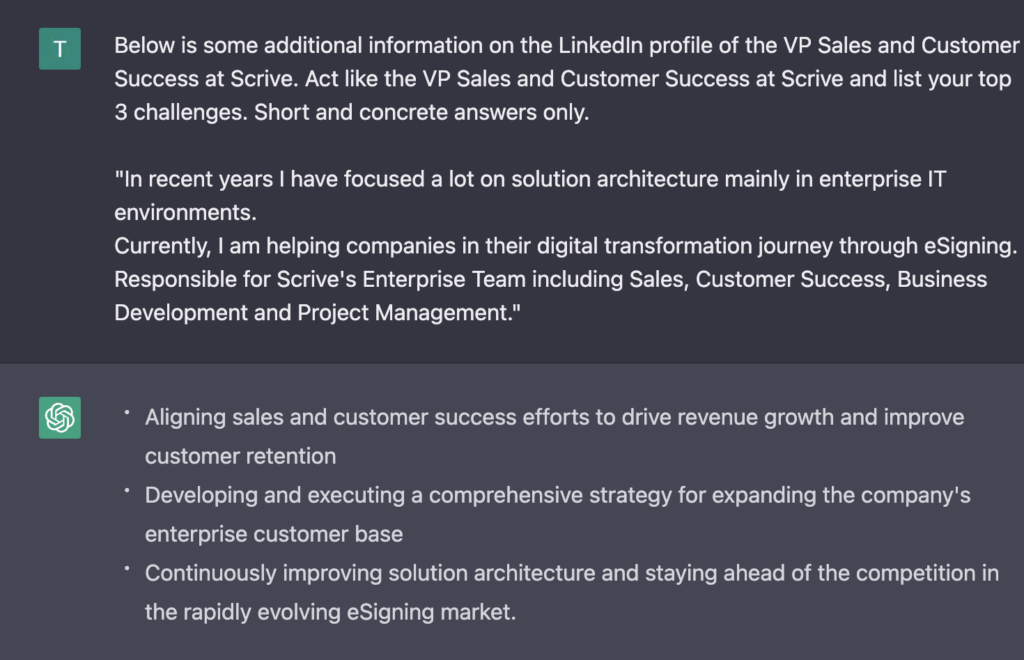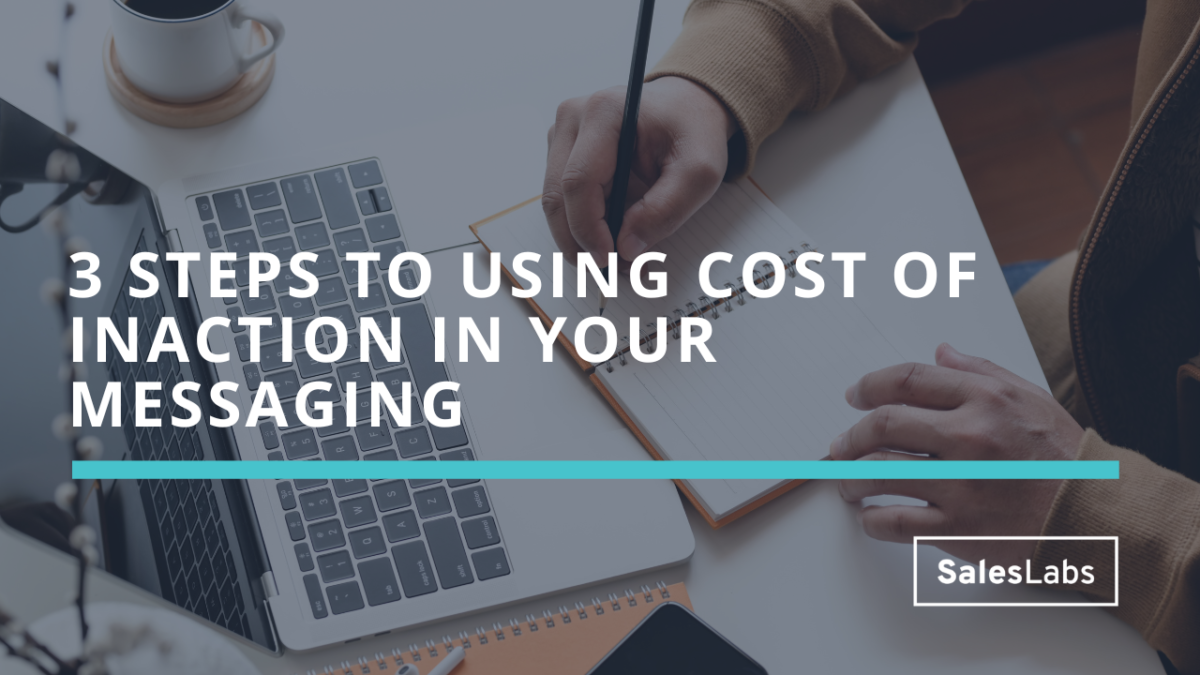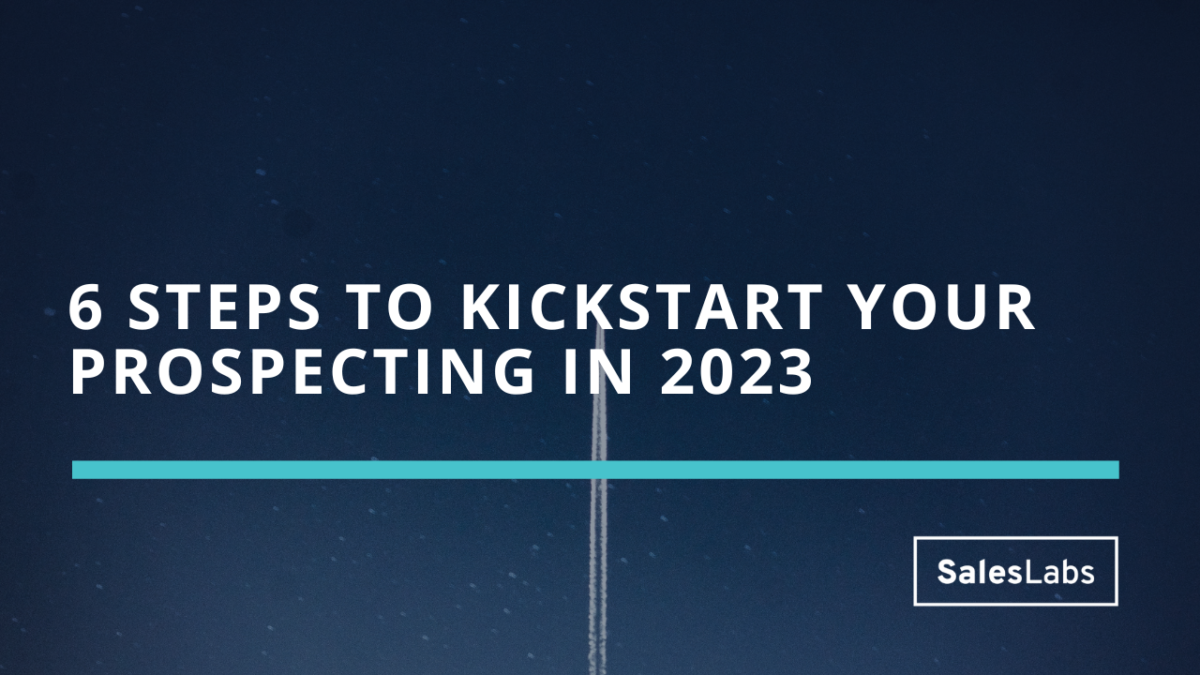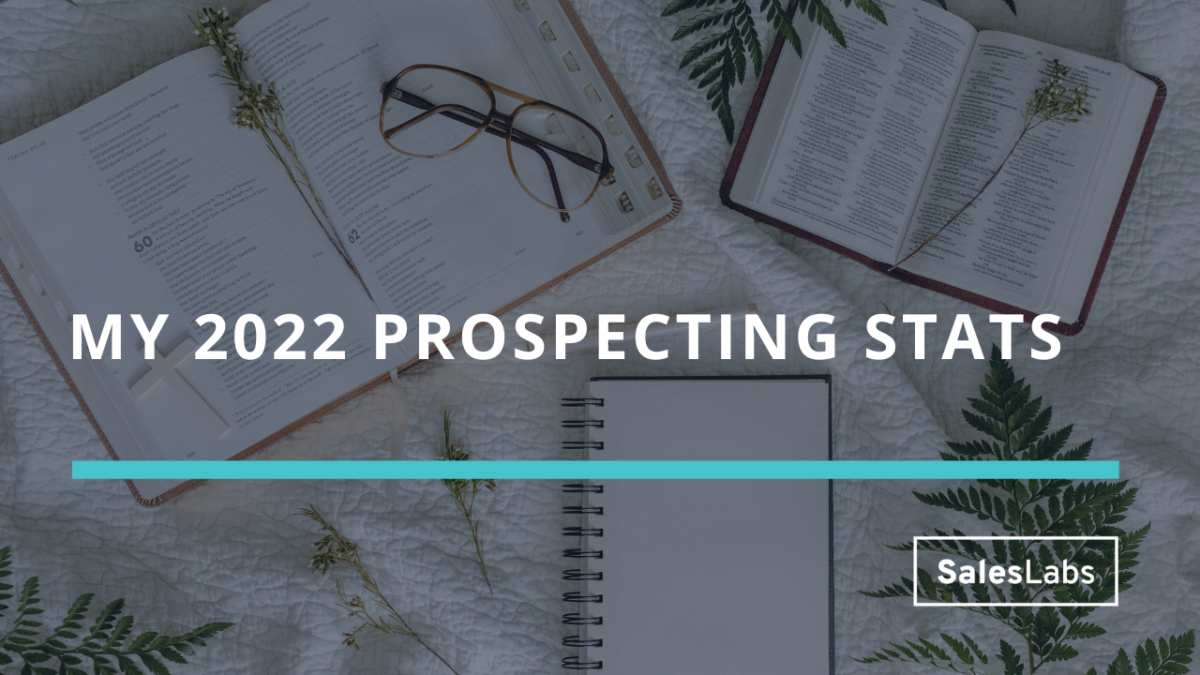Today’s newsletter is brought to you by The AI Outreach System. It’s my tactical guide to using Artificial Intelligence to book meetings. It’s now available for pre-order.
ChatGPT: 5 prospecting prompts you can’t afford to ignore
In today’s issue, I’m going to share 5 ChatGPT prompts you can use to help you book more meetings.
If you follow the steps below, you’ll stop playing around with ChatGPT, and you’ll start using it to give you an advantage and get noticed by your prospects.
Here’s the list:
Prompt 1: Find prospect problems
Prospect research is critical to getting replies when contacting prospects cold. It’s just extremely time-consuming. You can use the following prompt to help you come up with ideas of problems from your prospects.
Prompt: Act like [prospect name], the [job title] at [company]. [Company] is [description of company]. List your top 3 challenges for 2023. Bullet point and concise answer only.
How it works: ChatGPT isn’t a web crawler. If you use it like you would use Google, the output will be generic. Instead, feed it with as much details as you can about your prospect, and the business they are in.
Example: “Act like Jeff Weiss, Chief Revenue Officer at CMiC. CMiC is a construction software for accounting and project management, built on a Single Database Platform. List your top 3 challenges for 2023. Bullet point and concise answer only.”
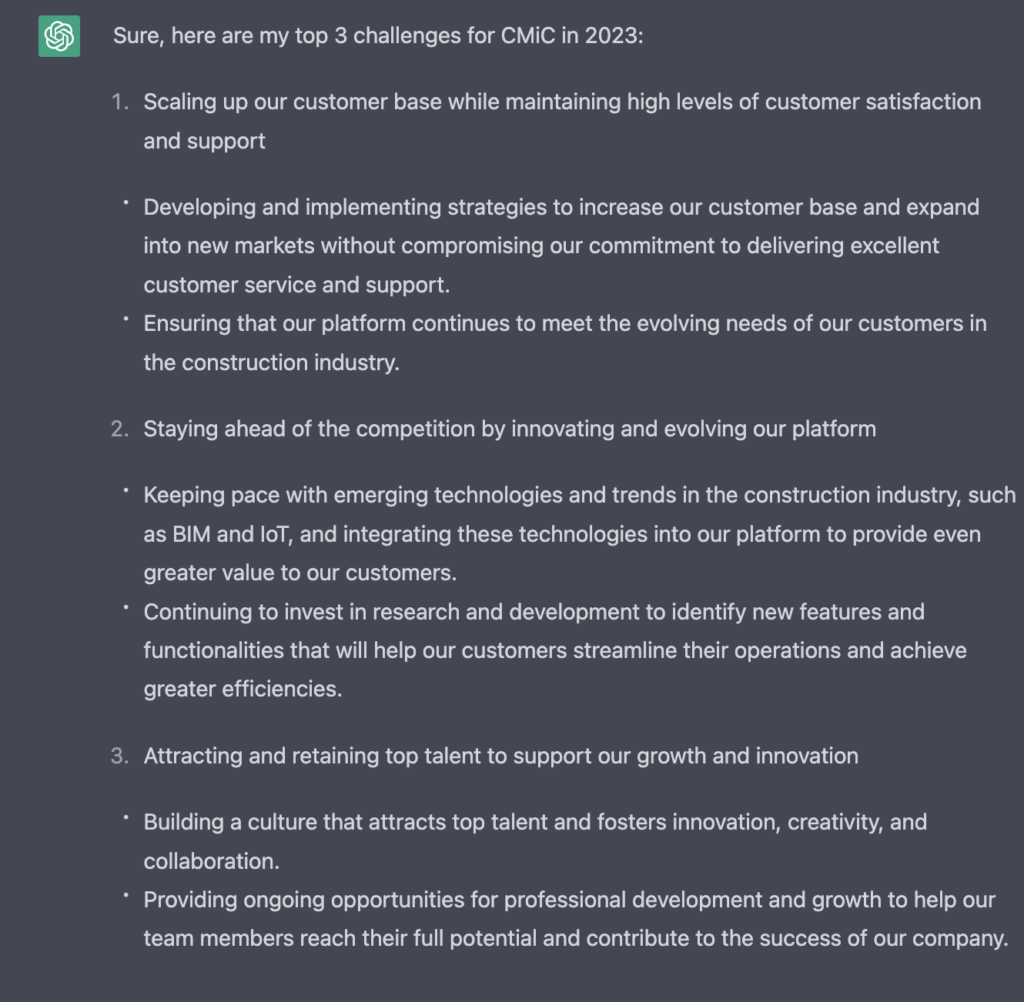
Want to explore this prompt? Check my free guide.
Prompt 2: Find problems symptoms
Now that you have an idea of the problems of your prospects, you can dig deeper by asking ChatGPT for typical symptoms.
Prompt: Now list 3 symptoms for each challenge above. Bullet point and short answers only.
How it works: ChatGPT uses the list of challenges it generated based on your input. It feeds off of it to come up with precise symptoms you can then use in your cold outreach.
Example:
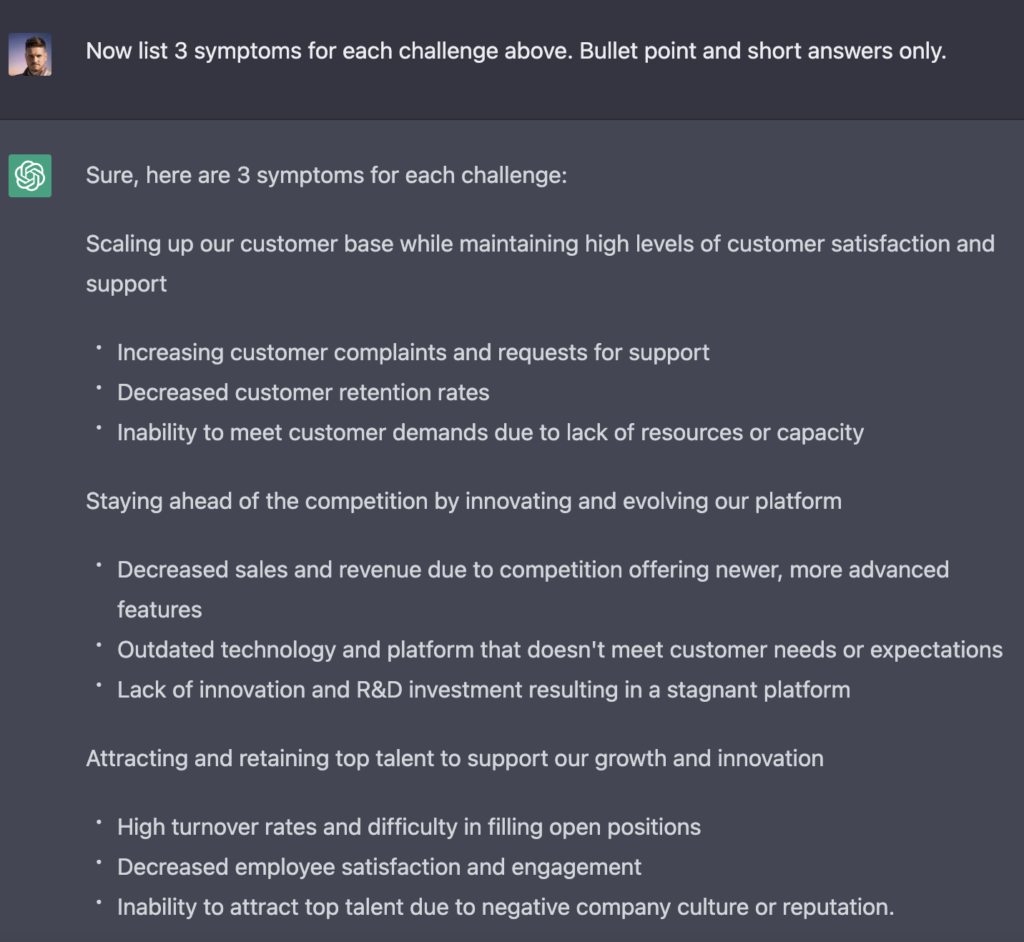
Prompt 3: Generate email subject lines
If you’re using email for your cold outreach, a catchy subject line is critical to get your prospects to open your email. Here’s how you can use ChatGPT to help you.
Prompt: Here are [x] subject lines that got my attention:
[subject line examples]
Act like a top-performing SDR and generate 10 new outbound prospecting email subject lines based on the examples above. Be short, creative, and focus on teasing the prospect’s curiosity.
How it works: When you feed ChatGPT with great subject line examples, you train it to act like someone who would write subject lines. The better the input, the better the output.
Example:
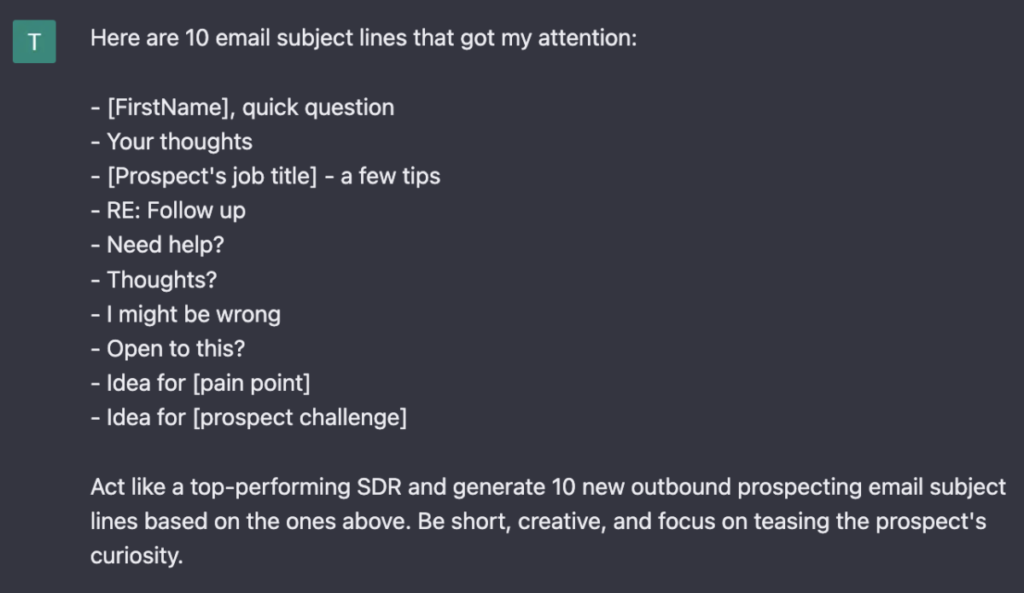
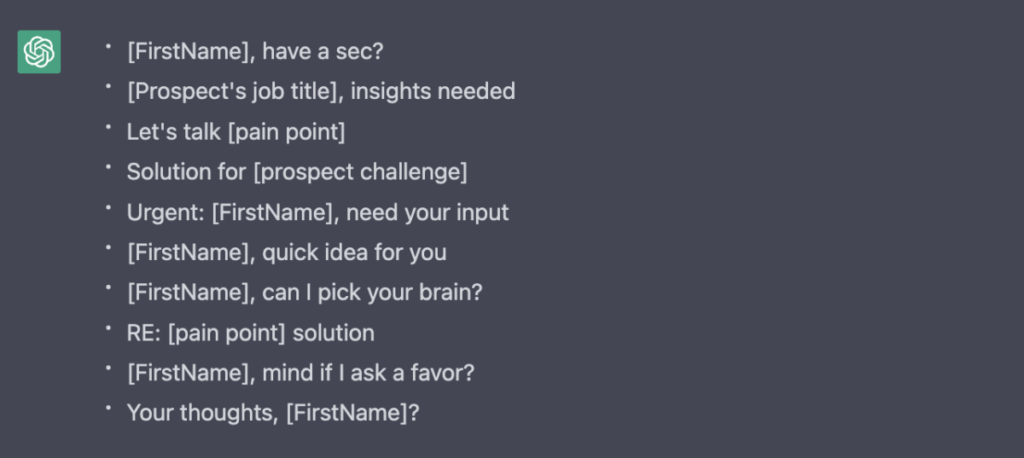
Check my free guide to building subject lines.
Prompt 4: Generate cold outbound messages
Email subject lines are great, but you can also train ChatGPT to build your outbound messages with any prospecting framework you want.
Prompt: Now I’d like to build a [x] touchpoint outbound sequence in order to get [prospect] to reply to my prospecting. I use the following framework for each message:
Question: A question based on one of the 9 symptoms above
Teaser: A potential resource to help alleviate the symptom mentioned in the question
CTA: A simple question to get a reply
Here’s an example for the first symptom you listed:
Question: How do you avoid and inconsistent of undefined sales process?
Teaser: If you’re interested, I can share a 3-step checklist to help you audit your sales process.
CTA: Worth checking it?
Now based on the framework I shared, build a cold outreach message for each symptom listed above. For the teaser, don’t mention a case study or webinar. Instead make it more appealing by calling it a resource, checklist, playbook, framework. Always introduce the teaser with a variation of “If you’re interested, I can share a [teaser]” or “If you’re into it, I can share a [teaser]”.
How it works: Just like the 3 prompts before, you’re training ChatGPT with a framework it can use to generate messages based on the symptoms of problems of your prospects.
Example:
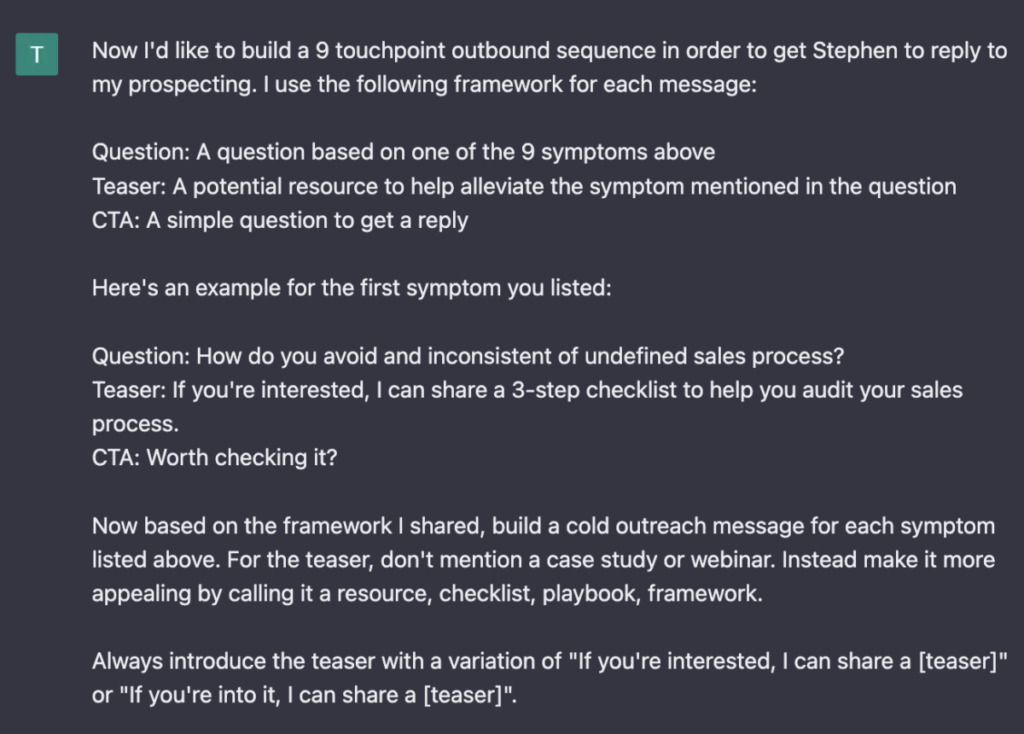

Prompt 5: Turn a marketing resource into a prospecting resource
Your marketing team is probably building blog posts, eBooks, and resources on a regular basis. You can use these resources to generate interest from your prospects.
Prompt: Act like an online marketer and turn the following content into a playbook: {summary}
How it works: Nobody has time to read a long-form blog post. You can use ChatGPT to summarize the content of a marketing resource, and turn it into a prospecting asset, like a checklist, or a playbook.
Example: Here’s a detailed guide on that, with examples.
And these are 5 ChatGPT prompts you can’t afford to ignore when prospecting. Most people get ChatGPT wrong. They think it’s a web crawler, and they are surprised it comes up with generic answers. Don’t be one of them, and try these prompts, you’ll be surprised.
Hope this helps!
Cheers,
Thibaut Souyris
- (NEW!) Learn how to use AI to book meetings here (500+ waitlisters and customers)
- Build your outbound prospecting system from scratch here (250+ students)
- Write cold messages that get a 38% reply rate and 27% meeting rate here (55+)
- Book me 1:1 or for your team here
- Sponsor my newsletter & get 4.200+ eyeballs on your ad!
Subscribe to the Newsletter
Get my free, 4 min weekly newsletter. Used by 5.400+ salespeople to book more meetings and work when, where, and how they want.
Subscribe to the Newsletter
Get my free, 4 min weekly newsletter. Used by 5.400+ salespeople to book more meetings and work when, where, and how they want.
